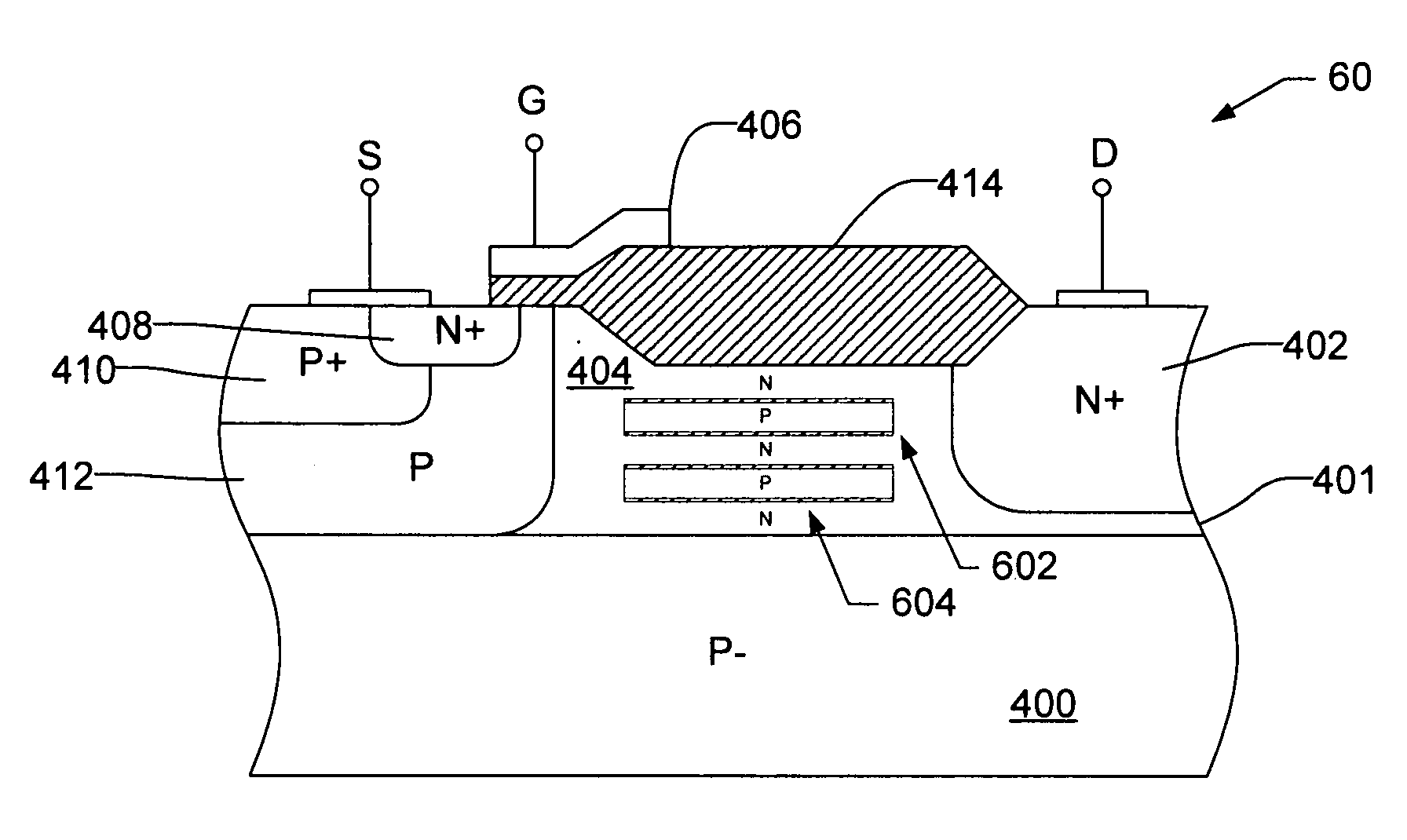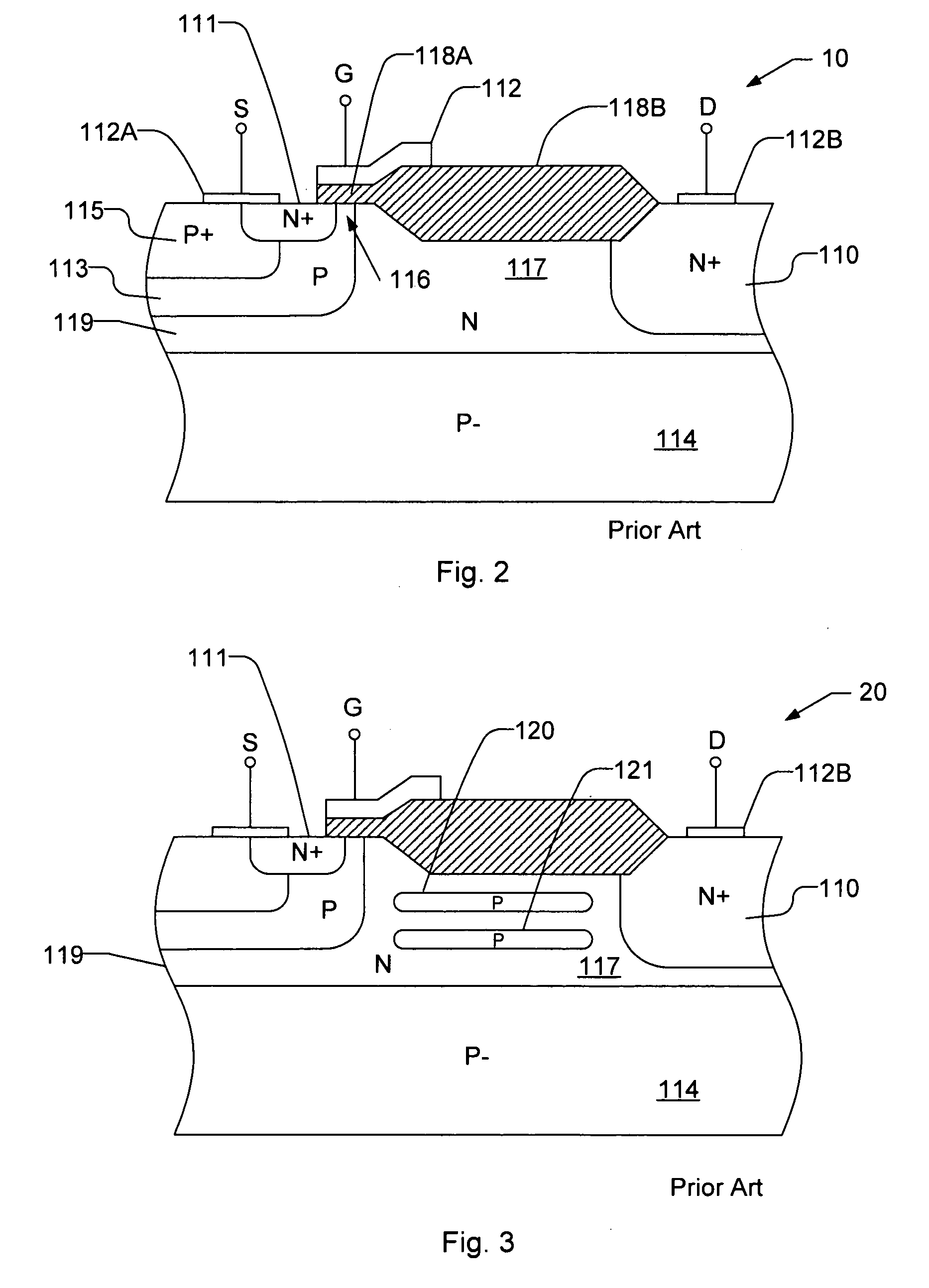Method of fabricating high voltage semiconductor devices with JFET regions containing dielectrically isolated junctions
a dielectric isolation and high-voltage semiconductor technology, applied in the field of high-voltage field-effect transistors, can solve the problems of increasing the voltage-blocking capability, affecting the manufacture of devices, and buried layers tending to diffuse outwards,
- Summary
- Abstract
- Description
- Claims
- Application Information
AI Technical Summary
Benefits of technology
Problems solved by technology
Method used
Image
Examples
Embodiment Construction
[0042]FIG. 4 is a top view of a first embodiment according to the invention. FIG. 5A is a cross-sectional view taken at cross-section 5A-5A in FIG. 4. FIG. 5B is a cross-sectional view taken at cross-section 5B-5B in FIG. 4. FIG. 6 is a cross-sectional view taken at cross-section 6-6 in FIG. 4.
[0043]Referring first to FIG. 4, a top view of a MOSFET 40 is shown. In layout, MOSFET 40 is generally of a rectangular shape, with rounded corners. As shown in FIGS. 5A and 5B, MOSFET 40 is formed in an N-epitaxial (epi) layer 401 that overlies a P− substrate 400. An N+ drain region 402 is located at the center of the rectangle, and it is surrounded by an N+ source region 408. Overlying the surface of N-epi layer 401 is a gate 406, which also surrounds N+ drain region 402. Lying outward of N+ source region 408 is a P+ body contact region 410. As shown in FIG. 5A, a P body region 412 is formed adjacent to N+ source region 408, and a channel region 417 within P body region 412 directly underlie...
PUM
 Login to View More
Login to View More Abstract
Description
Claims
Application Information
 Login to View More
Login to View More - R&D
- Intellectual Property
- Life Sciences
- Materials
- Tech Scout
- Unparalleled Data Quality
- Higher Quality Content
- 60% Fewer Hallucinations
Browse by: Latest US Patents, China's latest patents, Technical Efficacy Thesaurus, Application Domain, Technology Topic, Popular Technical Reports.
© 2025 PatSnap. All rights reserved.Legal|Privacy policy|Modern Slavery Act Transparency Statement|Sitemap|About US| Contact US: help@patsnap.com



